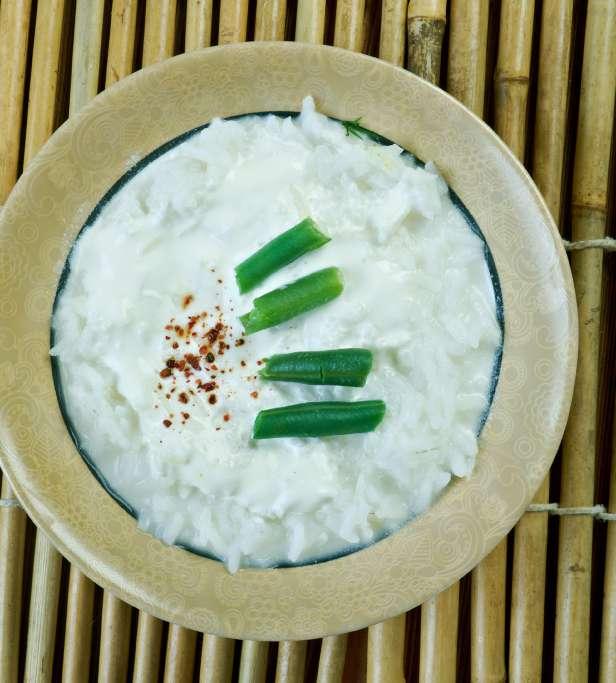
10 minute read
The State of Amazement
by SEEMA
The STATE Amazement Of
With great art, architecture, natural beauty, and cuisine, Odisha is the place to go
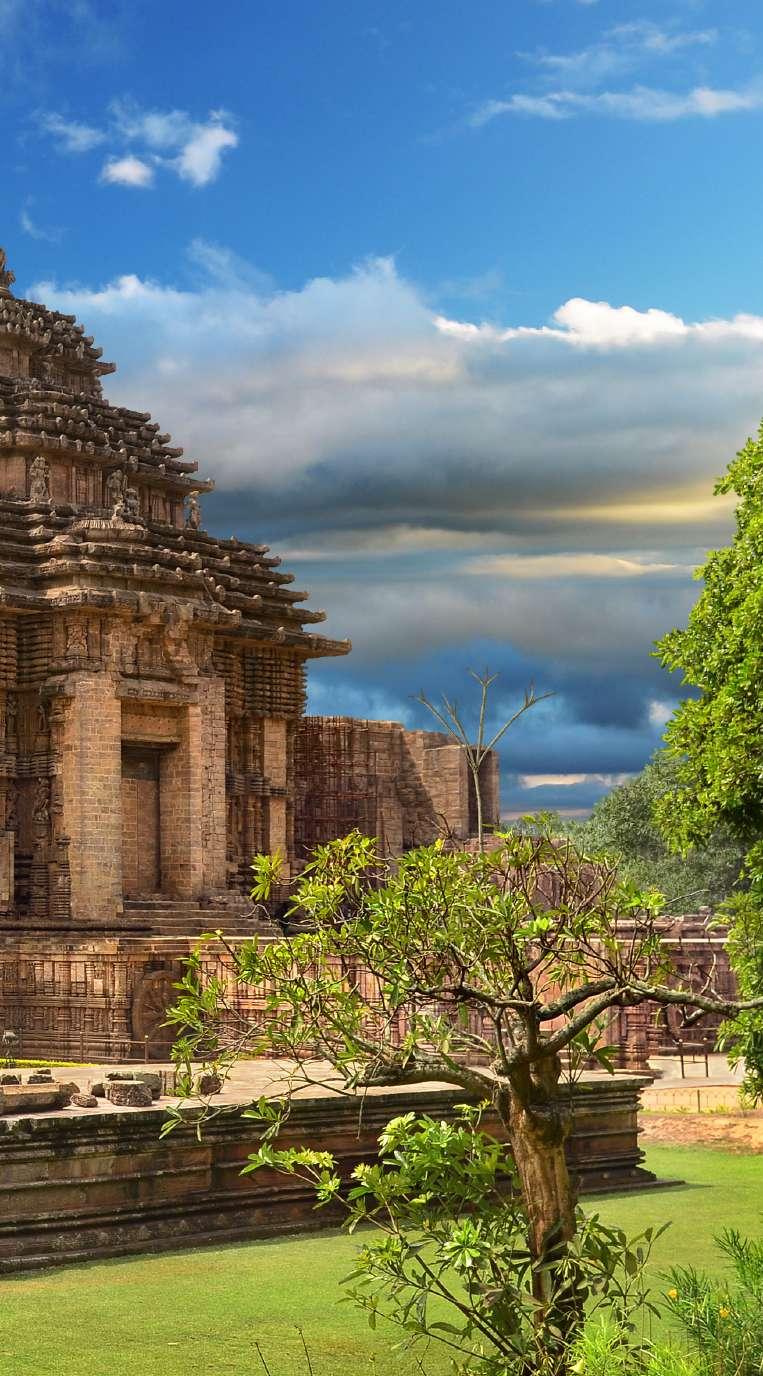
SWARNENDU BISWAS
Odisha is a state on the eastern side of India, but actually it lies in its millions and millions of tourists’ mind space. Yes, if you have traveled to Odisha, it is most likely that Odisha has become a state of your mind. It is a destination and also a journey…
Here, the abundance of delights for tourists is characterized by natural splendors, enchanting wildlife, rich legacy of textiles, arts and crafts and sumptuous culinary delights. In this feature, we would make a humble attempt to have a glimpse of some awesome destinations, magical textiles and delicious food of Odisha.
EXPLORING GOLDEN TRIANGLE
Of course, Puri, Bhubaneshwar and Konark are the three most important destinations of Odisha from the tourism point of view. Together these three destinations are referred to as the Golden Triangle as their geographies can be connected in a triangular shape.
There is Puri beach, with its golden sands, where you can get wonderful views of the mighty Bay of Bengal. The sunrise and sunset at the Puri beach can easily count among the experiences of a lifetime. Here, you can marvel at the Bay of Bengal at its turbulent best, with huge waves that can both frighten and thrill you at the same time.
The city of Puri is not an attraction solely for nature lovers. With several temples, Puri can attract lovers of religious tourism. Exploring the many temples of Puri, such as Gundicha Temple, Vimala Temple, Loknath Temple, and others, can itself call for many visits to the holy city.
However, the most important religious landmark in Puri is the Jagannath Temple, dedicated to the Lord Jagannath. The temple complex which houses Jagannath Temple and several other smaller temples and shrines, is spread over 400,000 sq. ft.
The Jagannath Temple, which, at 214 ft., is the highest temple in Odisha, was built in the 12th century by the Ganga dynasty king Anantavarman Chodaganga. The temple is still standing majestically and attracting millions and millions of devotees, more than 900 years after its construction. Jagannath, Balabhadra and Subhadra are the three deities worshiped at the temple. The Jagannath Temple’s kitchen is the largest kitchen in the world. The offering to Lord Jagannath in Puri, known as the mahaprasad, is much coveted.
The rath yatra is another worldfamous attraction in Puri. The celebration generally takes place in end-June or the beginning or middle of July. So, the 2021 rath yatra took place on July 12; the 2022 rath yatra is to take place on July 1.
The festival is about Lord Jagannath’s annual week-long visit to Gundicha Temple. For the rath yatra, idols of Jagannath, Balabhadra and Subhadra are removed from the temple, placed in three, huge, separate and well-decorated chariots, which are pulled by euphoric devotees. The deities remain at Gundicha Temple for seven days and then return to their abode.
Bhubaneshwar, 38 miles from Odisha, is not only the capital of Odisha but also a wonderful destination for religious tourists and lovers of art and architecture. The city and its surroundings have a number of temples with splendid architecture. Lingaraj Temple (dedicated to Harihara, a combined form of Vishnu and Shiva, it was built in the 11th century), Mukteswar Temple with its famous arched gateway and exquisitely carved pillars (celebrating Lord Shiva and built in the 10th century), and the enigmatic Rajarani Temple, built in the 11th century, which has no presiding deity (a temple without a God) are must visits. The erotic carvings of the Rajarani Temple reflect India’s ancient liberal traditions.
The Udaygiri and Khandagiri caves in Bhubaneshwar are worth exploring, too. On two adjacent hills — Udayagiri and Khandagiri — they are partly natural and partly artificial. They mostly served as abodes of Jain ascetics. They date back to the 1st century BCE.
You must visit the Museum of Tribal Arts and Artifacts, popularly known as the Tribal Museum. The museum gives remarkable insights into Odisha’s tribal life. Here, replicas of tribal huts of various tribal communities and artifacts collected from different tribal groups in Odisha are must see.
Konark should be a mustgo destination in your Odisha tour itinerary. The small town is globally renowned for its magnificent Sun Temple, built in the 13th century during the rule of Narasimhadeva I.
The UNESCO World Heritage Site represents the supreme excellence of Odisha’s ancient temple architecture. The magnificent temple, which is now mostly in ruins, was dedicated to the Sun God. It represents aweinspiring symmetry and precision in its architecture, and amazingly detailed sculptures, vividly showcasing life in ancient India.
Also known as the Black Pagoda, the temple was designed as a huge chariot of the Sun God, set on 24 intricately carved wheels and pulled by seven horses, all of it carved in stone. Now only six of the horses remain. The shadows of the wheels are designed to help tell the time of the day.
A five-day-long annual festival, the Konark Music and Dance Festival, is held there in December, against the backdrop of the Sun
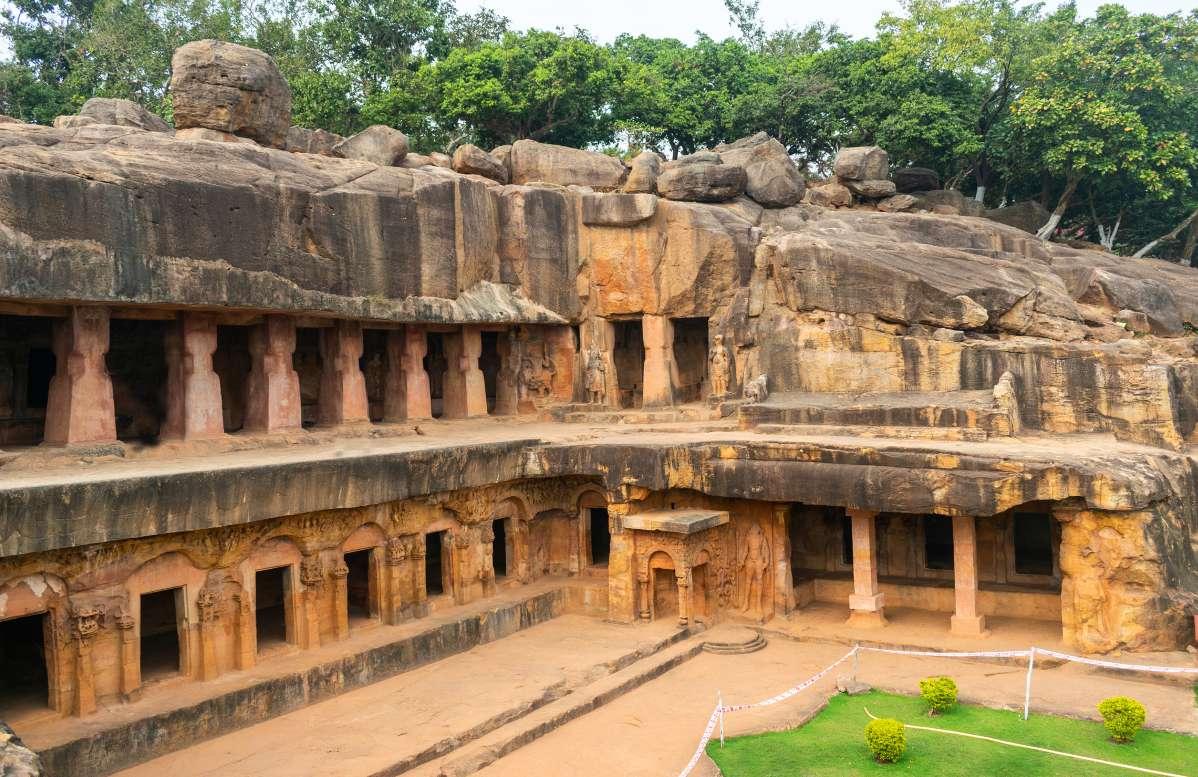
The hills of Udaygiri and Khandagiri located on the outskirts of Bhubaneswar, Odisha
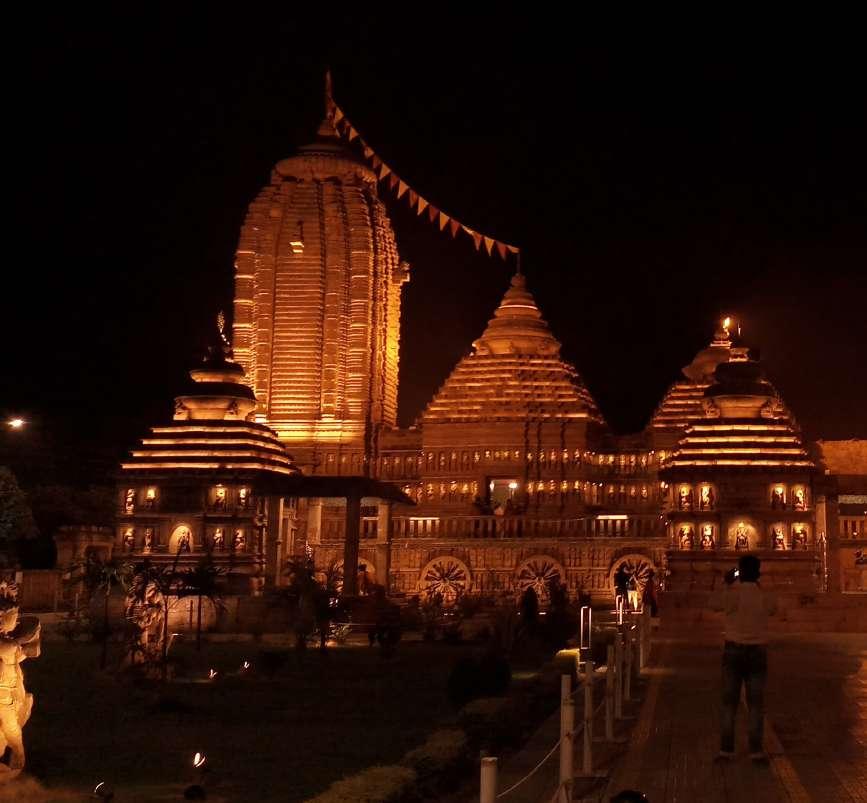
Jagannath Temple in Balasore
A priest offers rajnigandha flowers during ratha yatra
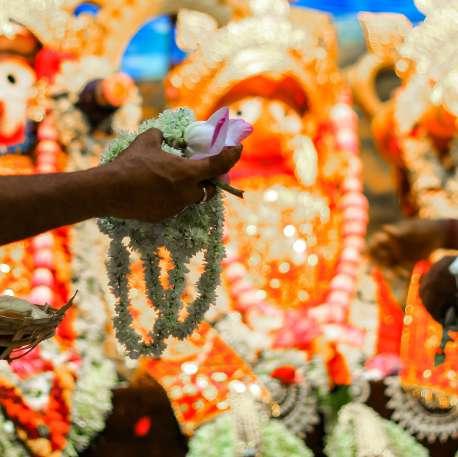
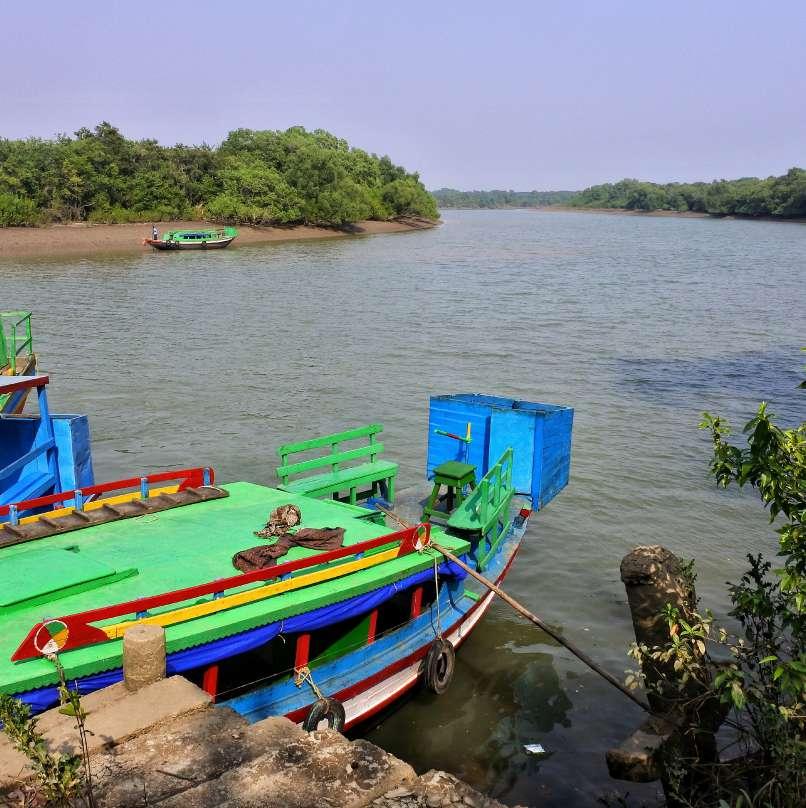
Boats in a river inside the Bhitarkanika National Park Temple. It is one of the most prestigious dance festivals in Odisha.
After visiting the Sun Temple, one can also head for the calm and clean Chandrabhaga beach in Konark. It is India’s first beach to get the Blue Flag certification, given to those environment-friendly clean beaches that have amenities of international standards.
Besides these three famous destinations that comprise the Golden Triangle of Odisha, the state has many lesser-known destinations and attractions, which can call for many visits to this fascinating state again and again.
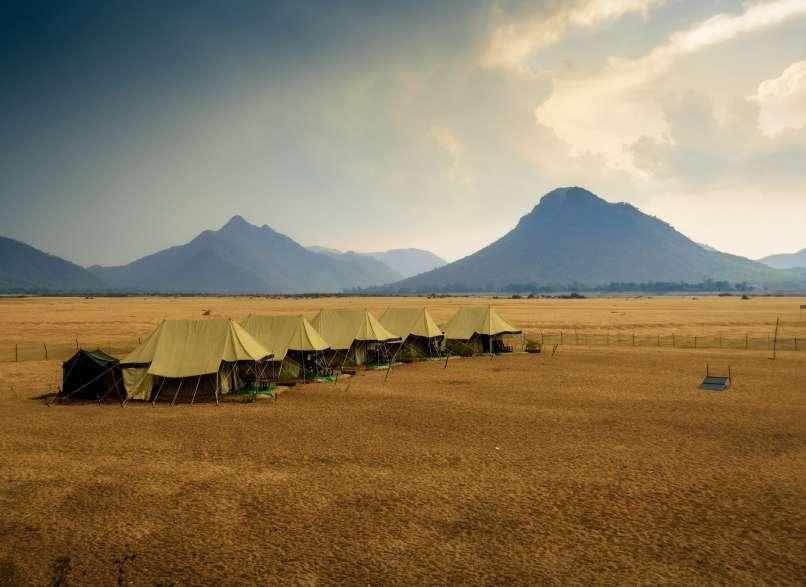
LAGOON, BEACHES, AND WILD DELIGHTS
The brackish water lagoon of Chilika Lake (the second-largest such lagoon in the world, covering 684 miles), located just 28 miles from Puri, hosts many migratory birds and the Irrawaddy dolphin. Over 160 bird species flock there during the peak migratory season. Chilika Lake is the largest wintering ground for migratory birds in the Indian subcontinent.
The Talasari Beach, in the Baleswar district of Odisha, has swaying palms, and coconut and cashew trees adorning the coastline. While watching the waves lapping the shore and catamarans in the distance, you can lose yourself.
Chandipur and Gopalpur must also be included in the beach tour of Odisha. During low tide, the Chandipur beach recedes up to 3 miles, allowing visitors to walk on the sea bed. Chandipur beach hosts a rich biodiversity, including endangered horseshoe crabs, starfish, and sea urchins.
Besides the glorious sea and the ancient temples, Odisha is known for its wild splendors. Satkosia Tiger Reserve, Bhitarkanika

National Park (Bhitarkanika is home to the largest congregation of the endangered salt water crocodile in the country and is the India’s second-largest mangrove ecosystem after the Sunderbans), Similipal Tiger Reserve (recently a rare melanistic tiger — a black tiger — was found there) and Debrigarh Wildlife Sanctuary, are some important wildlife destinations.
INTRICATE CREATIONS
However, the tourism delights of Odisha wouldn’t reveal the rich cultural tapestry of the state. The enduring legacy of textiles is one of the essential characteristics of this many-splendored state. Textiles of Odisha, which is an important manifestation of its rich culture, is characterized by intricate weaves, embodying uncommon dexterity.
Many remote villages in Odisha produce hand-loom fabrics of exquisite craftsmanship, marveled globally by the connoisseurs and commoners alike. The hand-loom industry is the most important cottage industry of Odisha, providing a livelihood to more than 250,000 weavers. Sambalpuri Ikat, Bomkai Silk, Berhampuri and Kataki sarees are some renowned saris this state produces.
TRADITION WITH TODAY
Delhi-based Vriksh Designs is a very creative player in the Odisha’s handloom sector.
According to its founder, Gunjan Jain, “Vriksh was conceived and born as a modest initiative to revive some of the dwindling weaving traditions of Odisha and contemporize the traditional handlooms of the state for the modern Indian market while making sure their cultural significance remains intact.
“For Vriksh, threads, hues, patterns and motifs on handloom fabrics aren’t simply the ingredients of design, they are

Gunjan Jain, founder, Vriksh Design living exhibits that offer you glimpses into the vibrant lives of the people of Odisha and their rich cultural mosaic,” she said.
Jain, who began her career in the garment apparel industry, often produces saris which depicts scenes from historical or mythological incidents pertaining to Odisha, thus adding to their visual and cultural appeal.
Recently, Vriksh Designs depicted the annual festival of Bali Yatra (a major festival in Odisha, considered one of Asia’s largest open trade fairs) on one type of sari. Vriksh Designs produces fabrics of cotton, Tussar silk, a blend of silk and cotton, and mulberry silk. “Besides these, we have recently introduced silk-linen saris, which has enhanced our portfolio,” Gunjan said.
One important sari-dyeing techniques used in Odisha is Ikat. Ikat is a dyeing technique used to pattern textiles that employs resist dyeing on the yarns prior to dyeing and weaving the fabric. Ikat woven fabrics are an important cultural heritage of the state.
“We use Ikat and Jala technique in our handloom creations,” Jain said.
THE TASTES OF ODISHA
Odisha’s culinary heritage also adds to its enduring tourism appeal. Odia cuisine is simple, delicious and easy to digest. It generally calls for very little oil and a restrained but judicious use of spices.
Dalma, a lentil dish cooked with an assortment of vegetables and spices, and pitha, a cereal-based steamed cake, are some dishes you shouldn’t miss out on during your visit. Dalma is generally partaken with the main meal, whereas pitha can be enjoyed at any time.
Pakhala bhata is a renowned dish from Odisha. This is a staple lunch in households in Odisha. It involves soaking rice in sour curd and water. Served with fried fish and fried vegetables on the side, it is good for the extreme summers of Odisha. Some researchers say the dish has vitamins beneficial for nerve cells.
Rasagulla, made from cottage cheese, which was known as kheera mohana in ancient Odisha, is a famous sweet dish of
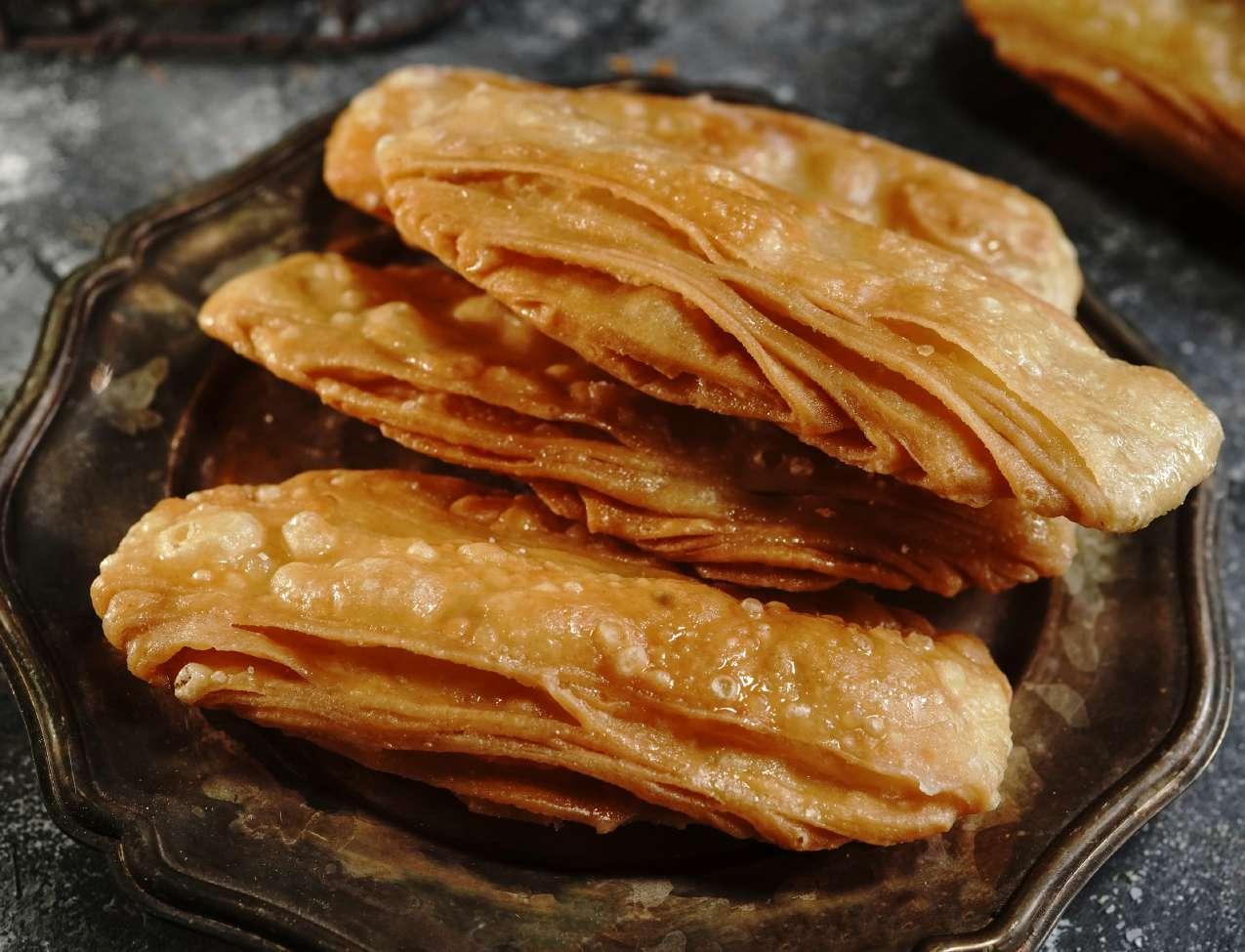
Homemade crispy, sweet khaja
Pakhala bhata is a summer-time dish of cooked rice washed or lightly fermented in water the state. Chennapoda is another famous sweet dish from Odisha. It is prepared by mixing cottage cheese with sugar and then placing the concoction in a bowl to give it its characteristic round shape. Then it is baked in an earthen oven covered with sal leaves. The burnt upper layer of chennapoda gives it the smoky flavor and contributes to its taste.
Rasabali, another sweet dish, comes soaked in thick flavored milk and garnished with cardamoms.
Chenna jhili is another dessert from the state, which can be simply be described as a brown jalebi made with cottage cheese. Khaja is a sweet dish wherein refined wheat flour is mixed with sugar and fried lightly in some oil.
So while travelling to Odisha do not just go for a swim in the sea or explore its ancient temples and enchanting wildlife. Also keep an eye out for its exquisite textiles, and sample some of its delicacies. These can not only satiate your senses but can be the stuff of memories.
